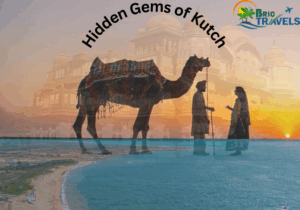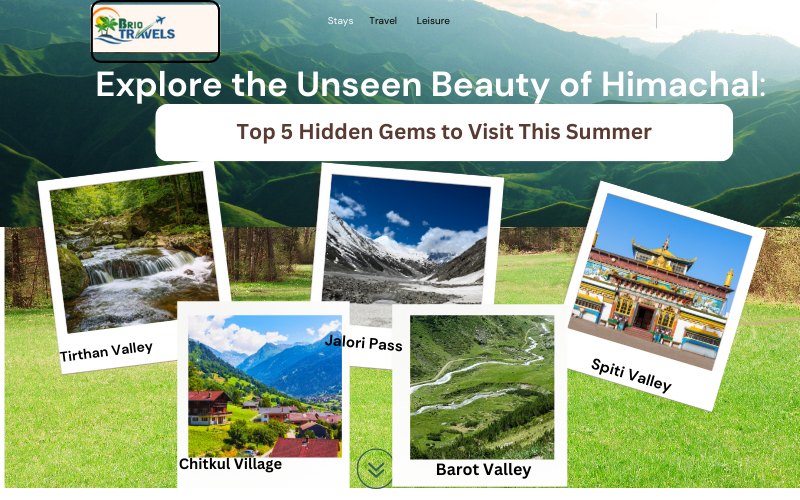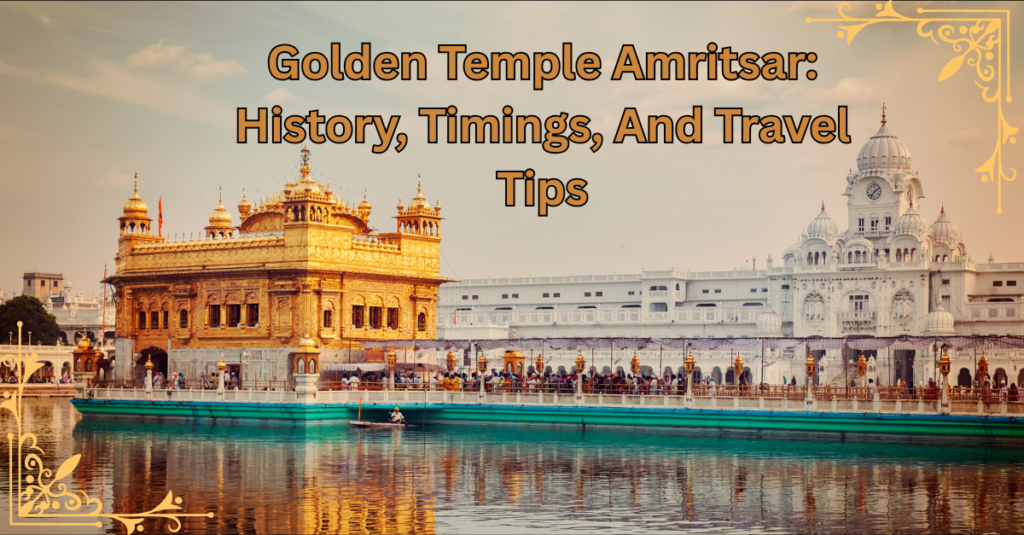The Char Dham Yatra in Uttarakhand is a sacred pilgrimage journey that covers four revered Hindu shrines of Yamunotri, Gangotri, Kedarnath, and Badrinath. Nestled in the Garhwal Himalayas, the Yatra is not only a spiritual expedition but also an exploration of nature, history, and age-old culture.
Each of these Dhams has its own significance, natural beauty, and nearby places that enhances their natural aura. Here’s a comprehensive guide to the best places to visit during the Char Dham Yatra.
1. Yamunotri Dham and Nearby Attractions
Yamunotri is the first stop on the Char Dham circuit and is also the source of the Yamuna River. It is situated at a lofty altitude of 3,293 meters in the Uttarkashi district.
Key Attractions:
a) Yamunotri Temple
- It was built in the 19th century by Maharani Guleria of Jaipur.
- The sacred shrine here is dedicated to Goddess Yamuna.
- The main ritual here includes cooking rice and potatoes in the local thermal spring Surya Kund.
b) Surya Kund and Gauri Kund
- Surya Kund: It’s a hot water spring where pilgrims cook offerings.
- Gauri Kund: This is a sacred pool where devotees bathe before entering the temple.
c) Hanuman Chatti
- It’s located 13 km from Yamunotri.
- It also serve as the starting point for the trek to Yamunotri Temple.
- This offers a scenic confluence of Hanuman Ganga and Yamuna rivers.
d) Janki Chatti
- It’s located just 6 km away from Yamunotri.
- It’s a popular stopover point and treats visitors with scenic views and hot springs.
- This place also has a lot of lodging options for the pilgrims
e) Kharsali
- This is the winter seat of Goddess Yamuna.
- Devotees love the wooden temple architecture and lush meadows here.
2. Gangotri Dham and Nearby Attractions
Although, the real source of River Ganges is Gaumukh, Gangotri is considered the mythical beginning point of the holy river. Located at 3,100 meters above sea level in Uttarkashi, the Dham impresses the devotees with panoramic views of Himalayan valleys.
Key Attractions:
a) Gangotri Temple
- It was built by Amar Singh Thapa in the 18th century.
- The shrine is dedicated to Goddess Ganga.
- It stays open from late April to early November.
b) Bhagirath Shila
- This is a stone slab locatednear the temple
- This is considered to be the same place where King Bhagirath meditated to bring the Ganga down to Earth.
c) Pandava Gufa
- It’s a cave where the Pandavas are believed to have meditated during their exile.
- It’s located around 1.5 km from Gangotri temple.
d) Gaumukh Glacier
- This is the actual source of the Ganga River.
- It is located about 18 km from Gangotri.
- To reach here, devotees take a trek through Gangotri National Park.
e) Tapovan and Nandanvan
- These high-altitude meadows treat visitors with stunning views of nearby Mount Shivling and the Bhagirathi peaks.
- It’s popular among both trekkers and nature lovers.
f) Harsil
- This is a quiet village, residing about 25 km before Gangotri.
- This place is famous for its apple orchards and pine forests.
- Travellers love the peaceful ambiance here.
3. Kedarnath Dham and Nearby Attractions
Dedicated to Lord Shiva, Kedarnath is one of the 12 Jyotirlingas and also a part of Chhota Dham circuit. Located at a high altitude of 3,583 metres, the journey here is both challenging and rewarding.
Key Attractions:
a) Kedarnath Temple
- The shrine is over a thousand years old.
- It’s believed to have been built by the Pandavas and later on, revived by Adi Shankaracharya.
- The temple is surrounded by snow-capped peaks and offers a deeply spiritual ambiance.
b) Bhairavnath Temple
- It’s located 500 metres from Kedarnath Temple.
- This is dedicated to Bhairava, who is believed to be the guardian deity of the Kedarnath valley.
c) Vasuki Tal
- This is a glacial lake situated about 8 km from Kedarnath.
- It’s spoils trekkers with surrounding snow-clad mountains and wildflowers.
d) Chorabari Tal (Gandhi Sarovar)
- It’s located 3 km trek away from Kedarnath.
- Mahatma Gandhi’s ashes were immersed here.
- It offers a panoramic view of the Himalayas.
e) Gaurikund
- It’s a starting point of the Kedarnath trek.
- You’ll find here hot springs and a temple dedicated to Goddess Parvati.
4. Badrinath Dham and Nearby Attractions
Badrinath, devoted to Lord Vishnu, is located at an elevation of 3,133 meters in the Chamoli district.
Key Attractions:
a) Badrinath Temple
- It’s one of the 108 Divya Desams.
- It impresses pilgrims with its traditional North Indian style architecture
- The striking points of this temple are a gold-gilded roof and intricately carved stonework.
- The shrine houses the idol of Lord Badrinarayan, made of black Saligram stone.
b) Tapt Kund
- It’s a natural thermal spring situated just below the temple.
- It’s a ritual for pilgrims to bathe here before Darshan.
c) Neelkanth Peak
- This scenic peak towers above the Badrinath Temple and make for a beautiful backdrop.
- This is also known as the ‘Garhwal Queen’ for its glowing sunrise views.
d) Mana Village
- This is the last Indian village before the Indo-Tibetan border.
- It’s famous for:
- Vyas Gufa: This is where Sage Vyasa composed the Mahabharata.
- Ganesh Gufa: It’s believed to be where Lord Ganesha wrote down the epic.
- Bhim Pul: This is a natural rock bridge located over the Saraswati River.
- Saraswati River Origin: It’s a small stream believed to be the beginning of the mythological river.
e) Charanpaduka
- This is a rock which has footprints of Lord Vishnu.
- It’s located 3 km uphill trek from Badrinath.
f) Satopanth Lake
- It’s a glacial lake located at an altitude of 4,402 meters.
- It’s named after the holy trinity — Brahma, Vishnu, and Mahesh — meditated here.
- The trek starts from Mana village.
5. Other Notable Places during the Journey
There are several other places near the Char Dhams that warrant entry into your itinerary. Many people opt for a Chardham Yatra Group Tour, and include these through and through scenic sites.
a) Ukhimath
- This is the winter seat of Lord Kedarnath.
- The idol is shifted here during the winter months.
- It’s known for its quiet and spiritually uplifting aura.
b) Joshimath
- It’s winter seat of Lord Badrinath.
- This serves as a popular hub for travellers heading to Auli, Valley of Flowers, and Hemkund Sahib.
c) Auli
- It’s a popular scenic skiing destination located near Joshimath.
- It offers a bird’s eye view of Nanda Devi and other Himalayan peaks.
d) Guptkashi
- This falls on the way to Kedarnath.
- It’s famous for Vishwanath Temple and Ardhnarishwar Temple.
e) Chopta
- It’s known as the “Mini Switzerland of India.”
- It serves as a gateway to Tungnath Temple (world’s highest Shiva temple) and Chandrashila trek.
Conclusion
The Char Dham Yatra is more than just a pilgrimage — it is a spiritual, cultural, and natural journey into the Himalayas. Whether you’re a devotee, a nature lover, or an adventurer, the nearby places to Char Dhams deserve a visit nonetheless. From the divine aura of ancient temples to the mesmerizing beauty of glacial lakes, and sacred confluences, this Yatra is a life-changing experience!








